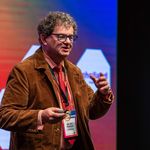How do Olympic cities strategically leverage New Urban Tourism? Evidence from Tokyo
Olympic cities increasingly draw on New Urban Tourism (NUT) principles as part of a host’s strategic tourism development objectives. By doing so, governments and event organisers seek to entangle visitors with local urban, cultural and everyday life. Yet, empirical evidence generated across previous Olympic cities illustrates how hosts often fail to encourage such host–guest interactivity. This is a critical tourism geography and consumption issue repeatedly identified across host city contexts. To address the disconnect between inbound urban tourists and host communities, Tokyo 2020 explicitly placed NUT objectives at the heart of official bid and policy promises. On the basis of a 33-day walking ethnography in Tokyo as well as 26 interviews and documentary analysis, our work details a set of strategically planned and creative NUT initiatives deployed by the public, private sector, and host community in the lead up to the Tokyo 2020 Games. Some of these include state-funded walking tours and city volunteer guide networks; tourist boards promoting local-grassroots festivals; through to joint collaborations between local tourist boards and ‘Timeout’ to produce local guides – constituting a productive step forward for showcasing the local culture outside tourist bubbles. Furthermore, we illustrate how Tokyo’s urban landscape closely intertwines tourist bubbles with local neighbourhoods affording a potential balance between staged and spontaneous host–guest interaction. Our conclusions emphasise the conceptual, social, and economic implications for strategic planning and implementation of NUT in Olympic cities and its potential contribution to inclusive and sustainable development.
Hosted on Acast. See acast.com/privacy for more information.









